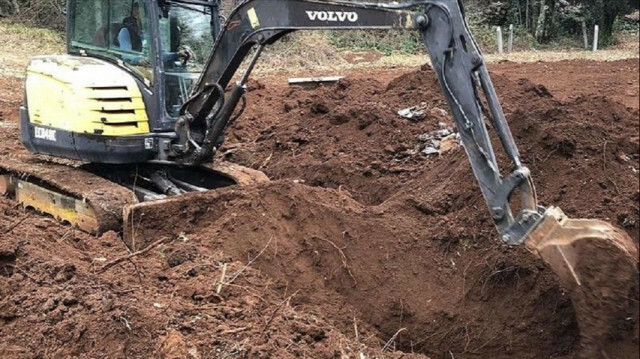
People were burned alive during Bosnian war, says Hikmet Karcic
Hundreds of massacres were committed during the Bosnian War between 1992 and 1995, and people were burned alive, said a genocide researcher.
Hikmet Karcic provided his assessment to Anadolu Agency about the massacres and number of dead in the war.
“Many innocent people lost their lives. Visegrad is among the cities that witnessed these massacres,'' said Karcic.
Karcic pointed out that many of those responsible for the massacre were not even brought to justice.
In 1992, more than 140 Muslim Bosnians were forcibly herded into the houses of Adem Omeragic and Meho Alijic in the city of Visegrad and set on fire, he said.
Speaking about another massacre called the Bijeli Potok massacre near the city of Zvornik, Karcic said it was one of the most brutal massacres.
''700 Bosniaks were killed in this massacre. All the victims were buried in the mass graveyard called 'Crni Vrh,' where some of the victims of the 1995 Srebrenica massacre were also buried,'' he said.
He added that the perpetrators have still not been prosecuted.
Karcic said this mass graveyard in Zvornik is the largest mass grave to be found before the Tomasica cemetery near the city of Prijedor.
"This shows us that the perpetrators of the massacres in Zvornik and Srebrenica were the same people. Many massacres have been committed throughout Bosnia and Herzegovina that have not been the subject of research until now. Genocides and crimes against humanity were often the most notable, but hundreds of massacres were committed, the exact number of which is unknown.”
Karcic said the list of places where massacres were committed is very big.
''Between 120 and 150 people were killed in the Karaterm concentration camp. Later, massacres took place in the Gacko and Nevesinje regions. Dozens of civilians were massacred in the Gorazde region. Also, massacres were carried out in the villages of Rizvanovici, Hambarine and Cerokovo near the Sana River,” Karcic said, adding that approximately 200 people were killed and buried in mass graves in the village of Biljani in the city of Kljuc.
“On Oct. 23, 1993, 38 Bosniak civilians were killed by Croatian Defense Council forces in Stupni Do district, near the city of Vares. Again by the same forces, 17 women, five children and many elderly people were killed in Kiseljak and 11 people were set on fire. The youngest victim killed here was a 2-year-old girl named Sabina Likic.”
Karcic said the entire village was looted after 58 houses and a mosque were burned in the same region.
On the morning of April 16, 1993, the military forces of the Croatian Defense Council made a sudden raid on the village of Ahmici, where 116 Bosniaks were killed. The youngest victim in Ahmici was a three-month-old baby.
The Bosnian War began on March 1, 1992 and lasted until December 14, 1995.
The war lasted for more than three years, more than 100,000 people lost their lives, and around 2 million people were forced to migrate.
Bosnia and Herzegovina experienced great pains during its independence war between 1992 and 1995, including the siege of Sarajevo and the Srebrenica genocide, Europe's worst atrocity since World War II.
The siege of the capital Sarajevo began on April 5, 1992. It took 1,425 days in total and a total of 11,541 people in Sarajevo, 1,601 of whom were children, were killed.
More than 50,000 civilians were injured from about 500,000 shells dropped on the city.
An average of 329 mortar shells were fired into the city every day.
More than 8,000 Bosnian Muslim men and boys were killed when Bosnian Serb forces attacked Srebrenica in July 1995, despite the presence of Dutch peacekeeping troops.
Hello, the comments you share on our site are a valuable resource for other users. Please respect other users and different opinions. Do not use rude, offensive, derogatory, or discriminatory language.
The floor is all yours.








